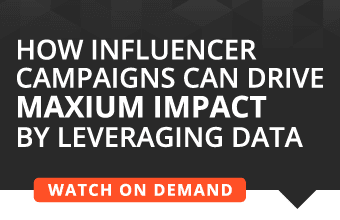A majority of brand marketers are stuck in a “tactical trap” with influencer marketing (IM), according to a new report from influencer relationship management platform Traackr, and Altimeter principal analyst Brian Solis. The latest State of Influence 2.0 report evaluates the current state of IM within leading enterprises and predicts the strategic evolution of the practice.
Influence 2.0 represents a significant shift from transactional IM to a more human-centered strategy that adds value throughout the entire customer journey. While more companies are moving from experimenting with IM to tactical programs (from 28 percent in 2017 to 47 percent of respondents in 2018), few have matured to advanced programs from last year.
“This ‘tactical trap’ occurs when organizations are unable to evolve their early influencer marketing initiatives from a broadcasting function to a strategic program that adds value beyond the top of the funnel,” said Pierre-Loïc Assayag, CEO and co-founder of Traackr, in a news release. “For companies to succeed in influencer marketing, they must lead with measurement and move towards consistent influencer campaigns integrated across their marketing activities and functions within the organization. Influence 2.0 is a one-to-one-to-many approach with the potential to engage throughout the entire customer journey.”
Key insights from the report on the status of Influence 2.0 include:
Budgets are on the rise but still constitute a tiny portion of total marketing dollars
While exactly half of respondents last year allocated less than $100,000 toward IM, this year more than 70 percent have budgets of more than $100,000. However, these IM budgets only make up less than 10 percent of the overall marketing dollars for more than 60 percent of respondents.
Marketers value owned and earned first—and see paid as means to amplify
This year, respondents put a greater emphasis on leading with genuine relationships, preferring to develop partnerships with influencers in an earned capacity (81 percent), compared to paid partnerships (61 percent).
Technology usage is on the rise
Respondents were 30 percent more likely to use some form of influencer technology this year than last. Usage of influencer identification technology has more than doubled, while opt-in network usage has declined by nearly 20 percent. Usage of influencer relationship management technology has increased by 32 percent, demonstrating a growing need within organizations to centralize their influencer databases in one system of record.
Most advanced companies leverage technology, internal staff and cross-functional collaboration
Teams with smaller budgets are hindered by lack of resources. For the most advanced companies, 65 percent manage IM through internal teams with the internal program lead having IM experience. In addition, 81 percent of experienced teams use IM technology. But for companies stuck in the tactical stage, one of the biggest difficulties in crossing the chasm to advanced programs is not enough resources (staff and budget). Forty percent of companies surveyed are still manually identifying, managing and measuring programs without tools or tech.
Lack of ROI data and resources are the most difficult challenge for both tactical and advanced companies
Influencer marketing is deemed successful by respondents across several marketing fronts – social media marketing, content marketing and branding at the top of the list – but IM still has a way to go to become cross-functional and requires better data on ROI to drive Influence 2.0. Teams cannot make the case for greater budgets and cannot demonstrate the impact of IM on business objectives if they don’t have the data or insights necessary to do so. Strategies must start with an end in mind that executives can understand and value.
Despite roadblocks, marketers are still bullish on IM, aiming to see influencer programs integrated in all marketing activities, supported by larger budgets and run by a dedicated IM group over the next three years.
“The disparity between experimentation and maturity in influencer marketing at global enterprises is still vast, but our research demonstrates the desire and intent for Influence 2.0 to take root in organizations,” said Solis, in the release. “By connecting the dots between influencer and customer value and business impact, marketers can lay the foundation for influencer strategies that go beyond traditional top-of-funnel campaigns and engage customers cross-functionally throughout their journey.”
Download the full report here.
The report features a global survey of 118 digital marketers at enterprise organizations in both B2B and B2C industries.








